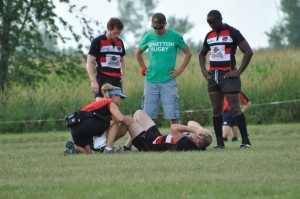Thigh pain is a type of pain or discomfort that affects the area that includes the pelvis up to the knee. The thigh is responsible in providing support and enables movement, and made up of bones, muscles, ligaments, tendons, nerves and blood vessels. The tendons attach the thigh muscles to the bones of the pelvis and the lower legs.
Thigh pain can occur suddenly or gradually along with a dull feeling as well as achiness, throbbing, piercing or tingling sensation. There is a pain-like sensation that can be described as pins and needles, prickling or burning. Take note that thigh pain can be irritating and uncomfortable and there is difficulty in putting weight on the affected leg especially when walking.
Symptoms of thigh pain
- Joint pain, muscle spasm and swelling
- Bleeding, bruising, laceration and abrasion
- A burning or prickling feeling and tingling, pain or other abnormal sensations that can be felt in the toes.
- Changes in gait such as limping and diminished range of motion.
- Flu-like symptoms such as fatigue, sore throat, fever, headache, cough, ache and pain.
Causes of thigh pain

Thigh pain among children can be caused by cramps and strains. If the child has difficulty moving the legs or cries if the leg is touched, seek medical help immediately. The groups of muscles that are affected include the quadriceps and hamstrings. The quadriceps is found on the front of the thigh while the hamstrings are found at the back of the thigh. Cramping in these muscles can cause intense pain that can last less than a minute. A strained muscle forces the child to walk with a limp or cannot walk at all and sometimes a “popping” sound can be heard or felt when the hamstring is damaged.
Treatment and home remedies
- You can relieve the cramps by experienced by the child by stretching the affected muscle while performing massage.
- Apply an ice pack over the affected area if there is soreness after the cramp subsides. You can learn more about cold therapy if you will enroll in a first aid course today.
- Drink more fluids especially if the cramp occurs on a hot day.
- In case the quadriceps or hamstrings are affected, it is important to allow the leg to rest for the initial 48 hours and then apply an ice pack over the affected area for about 20 minutes at least four times a day.
- Switch to warm compress after 48 hours at least twice a day. Cold compress minimizes the inflammation while the warm compress promotes faster healing of the affected area.
- Once the pain disappears, perform gentle stretching and strengthening on the thigh muscles.
- Children are comforted by a cuddle from a parent, a massage, hot compress and a having a warm bath before bedtime to help minimize the pain.
- Provide pain medications such as acetaminophen or ibuprofen to relieve muscle cramps and strain.
